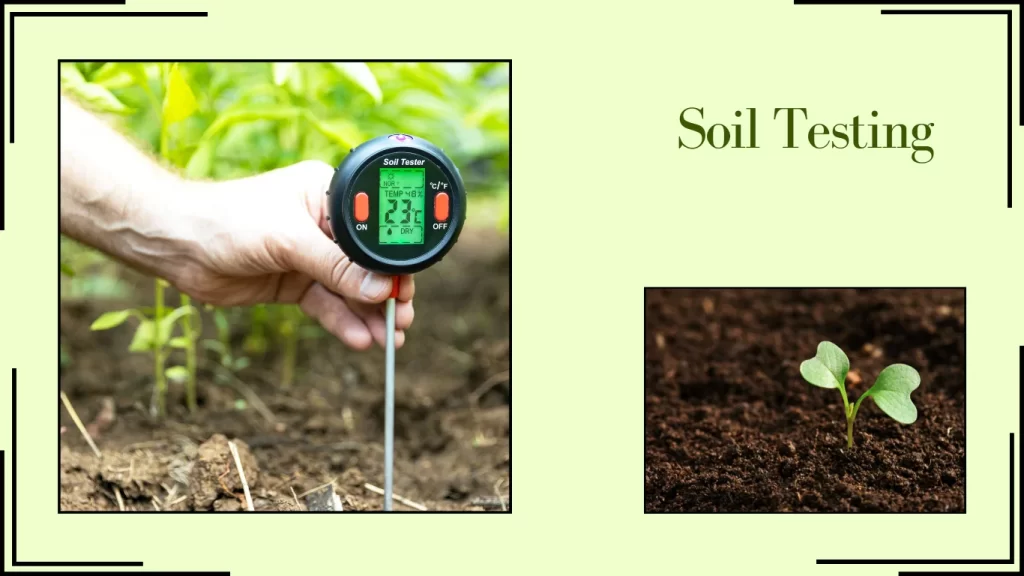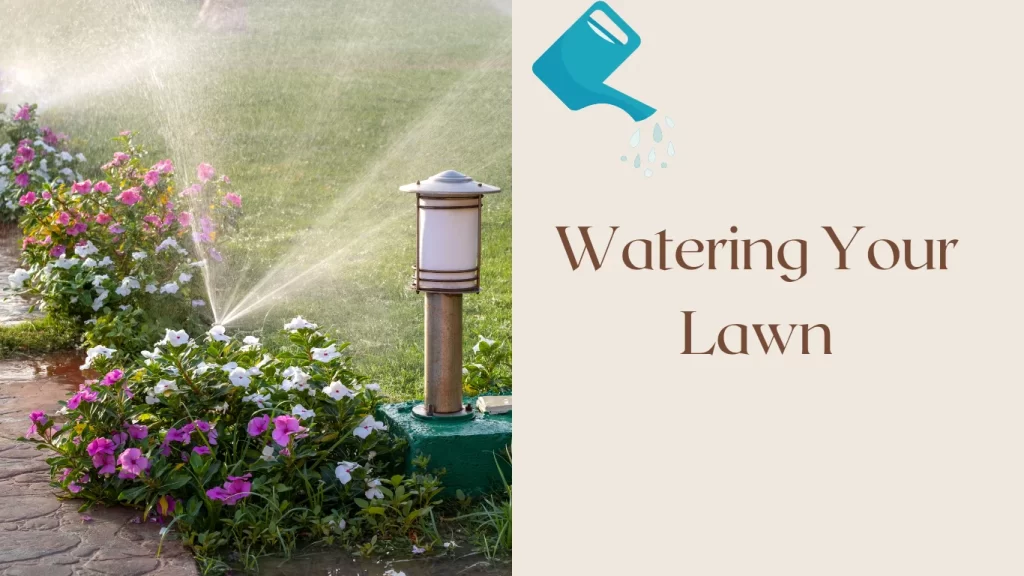Beginning a lawn care journey can be difficult for beginners. You need dedication and a solid understanding of lawn care 101 essentials to maintain a healthy, growing, green lawn. Our guide aims to equip beginners with lawn care tips, ensuring your green space thrives. We will discuss soil preparation, which lays the foundation for a healthy lawn, and the importance of selecting the correct type of grass that best suits your garden’s climate and soil type. Additionally, we cover effective mowing techniques to keep your lawn looking its best, including the often-overlooked watering strategies that conform to your grass’s needs. Each section of this article is essential for beginner gardeners looking to master the art of lawn care.
Soil Preparation Garden Care

Understanding the foundation of your lawn starts with soil preparation. Let’s explore why soil testing is crucial and discuss common soil amendments that can improve your lawn’s health.
Why Soil Testing Matters
Soil testing is not just a primary step; it’s essential for identifying what your lawn needs to thrive. By analyzing soil, you can determine its nutrient content, pH level, and composition—factors that significantly affect lawn health. A soil test reveals deficiencies in essential nutrients like nitrogen, phosphorus, and potassium and guides you in selecting suitable fertilizers to avoid over or under-fertilization. Moreover, adjusting the soil pH to an optimal level enhances nutrient uptake, making your lawn more resilient and vibrant.
Common Soil Amendments
Organic matter improves soil structure and fertility. It enhances water retention, introduces beneficial microorganisms, and provides nutrients. For drainage or compaction issues, gypsum or lime can help improve soil structure and adjust pH levels. Adding amendments like peat moss, worm castings, or humic acids in nutrient-poor soils can significantly boost nutrient content and improve soil texture. Understanding and applying these soil preparation techniques sets a solid foundation for a lush, healthy lawn.
Grass Selection Lawn Care 101
Choosing the right grass type is essential for developing a thriving lawn. Grasses are broadly categorized into cool-season and warm-season types. Cool-season grasses, such as Ryegrass, Fescues, Bluegrass, and Bentgrass, perform best in cooler climates and are ideal for regions like Tasmania, South Australia, ACT, and some areas of New South Wales. They are known for their brilliant green colour and soft texture, contributing to a premium-looking lawn. However, they require more water and are more susceptible to diseases in high humidity.
Conversely, warm-season grasses, including couch grass, Kikuyu, and buffalo grass, thrive in warmer temperatures between 20 and 32 degrees Celsius. These grasses are suited for regions like New South Wales, Queensland, and Western Australia. They exhibit better heat and drought tolerance and are known for spreading and thickening the turf.
Characteristics of Different Grass Types
Each grass type has unique characteristics that suit specific conditions and preferences.
- Kikuyu is challenging, fast-growing, and cost-effective, but it requires frequent mowing during the summer. Due to its good drought tolerance and ability to self-repair, it’s an excellent choice for yards with high family use.
- With its fine leaf texture, Zoysia grass is suited to coastal and warm climates and offers excellent salt and drought tolerance.
Understanding the specific needs of your lawn area and the characteristics of different grass types will guide you in making the best choice for a lush, healthy lawn that meets your aesthetic and functional needs.

Mowing Height Guidelines
When mowing your lawn, it’s crucial to adhere to the ‘one-third rule’ – never remove more than one-third of the grass blade at a time. This practice helps avoid stress on the grass, promoting healthier growth and preventing damage to the roots. Mowing height differs depending on the type of grass and season. Cool-season grasses like tall fescue and bluegrass can range in height from 25mm to 100mm, while warm-season grasses such as buffalo and zoysia are typically kept between 10mm and 75mm. Adjusting the mower height according to these guidelines ensures that the grass remains robust and lush, reducing the likelihood of weed invasion and disease.
Seasonal Mowing – Lawn Care Tips for Beginners
The frequency of mowing varies with the seasons due to changes in growth patterns. During the peak growth periods of spring and autumn, you may need to mow more frequently, especially if you have cool-season grasses that thrive with more rain. Conversely, mowing frequency should be reduced when growth slows during the summer. Avoid mowing in high-heat weather or when the grass is wet. Doing so can damage the grass blades and potentially harm your mower.
For winter, raise the cutting height to allow the grass to capture more sunlight, which is crucial during the shorter days. This adjustment helps the grass maintain its health and vigour during the colder months when it enters a dormant state. Always ensure that your mower is well-maintained, with sharp blades to make clean cuts that promote the grass’s health and aesthetic appeal.
Watering Strategies Lawn Care

Optimal Watering Times
Watering your lawn effectively starts with choosing the right time. Early morning is ideal, typically before 9 or 10 AM, as it minimizes evaporation and allows water to soak deeper into the soil, reaching the roots where it’s most needed. This timing helps conserve water and ensures your lawn has enough moisture to withstand the day’s heat. Watering late at night is discouraged as it can lead to prolonged dampness, which might invite fungal diseases.
Check out our article on The Best Gardening Tools.
Preventing Overwatering
While keeping your lawn hydrated is crucial, too much water can be as harmful as too little. Overwatering leads to a shallow root system, making the lawn susceptible to weeds and diseases. To prevent this, it’s advisable to water deeply but infrequently, encouraging roots to grow deeper in search of moisture, which builds a more resilient turf. Monitoring the amount of water your lawn receives is key—generally, lawns need about 25mm of water per week, either from rainfall or irrigation.
If you notice runoff or puddling, it’s a sign to reduce the watering duration or frequency. Furthermore, installing a rain sensor on your irrigation system can prevent overwatering by automatically adjusting the schedule based on recent rainfall, thus saving water and protecting your lawn from water-related stress and diseases.
Conclusion – Lawn Care Tips For Beginners
Through this journey of lawn care 101 tips, we have explored the essentials of starting and maintaining a healthy, thriving lawn that not only beautifies your home but also provides a lush, green sanctuary for you and your family. We discussed lawn care from the critical step of soil preparation, selecting the right grass type for your climate, to mastering the art of mowing and the nuances of effective watering strategies in garden care.
Remember that garden care is a rewarding journey that evolves each season, demanding patience, adaptability, and a commitment to learning. The implications of adopting the proper techniques and practices stretch beyond mere aesthetics, contributing to the environmental benefits of maintaining green spaces. We encourage further exploration and adaptation of lawn care strategies to meet the specific challenges your lawn may present, ensuring it remains a source of pride and enjoyment.
What’s the key to maintaining a lush, green lawn?
Nurture the soil to achieve a lush, green lawn. A healthy lawn thrives in soil rich in organic matter and teeming with microorganisms. Enhance your lawn by spreading a thin layer of weed-free compost over it during spring and fall, and water lightly to allow the nutrients and microbes to penetrate the soil.
What should I apply to my lawn to enhance its greenness?
To make your lawn greener, use a lawn fertilizer that contains nitrogen, phosphorous, and potassium. These nutrients fortify the grass, ensuring it thrives from the roots and maintains a healthy, lush green appearance. Nitrogen, in particular, is crucial for achieving vibrant green grass.
What are the steps to achieving an ideal lawn in Australia?
For an ideal lawn in Australia, maintain a consistent mowing, feeding, and aerating routine. Always mow with your mower set to the highest possible height to encourage leafy growth, which helps suppress and eliminate weeds. Feed your lawn with granular, organic poultry manure every three months during the growing season to keep it nourished and healthy.





